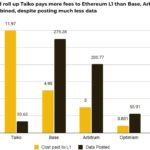In a bold move aimed at restoring community trust, Mantra’s CEO John Mullin has announced plans for a comprehensive token burn program for its OM token. The announcement follows a dramatic plummet in OM’s value, which saw it drop from over $6 to under $0.45 in a matter of hours. This sharp decline has raised eyebrows across the cryptocurrency landscape, with Mullin attributing the loss primarily to exchanges closing OM positions.
In a post on X, Mullin emphasized his commitment by stating, “I am burning MY team tokens, and we will create a comprehensive burn program for other parts of the OM supply.” This decision, which involves removing a portion of the token circulation, is a strategic effort aimed at increasing the value of the remaining OM tokens. Token burns are a common mechanism in the cryptocurrency space, designed to enhance value by reducing supply.
Mullin’s announcement comes in the wake of skepticism from industry insiders, including OKX founder Star Xu, who labeled the incident surrounding OM’s price drop as “a big scandal.”
As of now, OM’s trading value hovers around $0.81, reflecting an 87% decline since the troubling events of earlier this week. While the team’s efforts to mitigate the effects of this downturn are underway, the future of OM remains cloaked in uncertainty as the community watches closely for further developments.

Mantra’s OM Token Burn Program Announcement
Key points from the recent developments regarding the OM token and its implications for investors and the community:
- Burn Program Initiative: Mantra plans to implement a comprehensive burn program for its OM token, as announced by CEO John Mullin.
- Community Trust Restoration: Mullin’s decision to burn team tokens aims to regain the community’s trust following a significant drop in OM’s value.
- Significant Value Drop: OM token’s value fell from over $6 to under $0.45 in just hours, causing concern among investors.
- Exchange Activities: Mullin attributed the drop in value to exchanges closing OM positions, raising questions about market manipulation.
- Market Sentiment: The incident has led to widespread concern, with OKX founder Start Xu labeling it “a big scandal,” impacting investor confidence.
- Current Trading Value: As of the latest update, OM trades at around $0.81, which is 87% lower than its pre-drop value.
The burn program may help stabilize OM’s price by decreasing supply, but trust must be rebuilt with the community for long-term success.
Analysis of Mantra’s Token Burn Initiative: A Strategic Move or a Reaction to Crisis?
The recent announcement by Mantra’s CEO, John Mullin, regarding the implementation of a token burn program for their OM cryptocurrency has garnered significant attention in the crypto realm. Positioned as a remedy to restore community confidence following a steep decline in OM’s value, this strategy aligns with trends seen in various real-world asset projects struggling to maintain credibility amid volatility.
Competitive Advantages: The token burning strategy presents a notable advantage for Mantra, as it reflects an effort to enhance the scarcity of the OM token. By reducing the token supply, the initiative could potentially increase the value of the remaining tokens, creating a bullish sentiment that appeals to investors who prioritize scarcity as a mechanism for value enhancement. This is reminiscent of successful burns executed by established cryptocurrencies like Binance Coin (BNB) or Stellar (XLM), which effectively leveraged similar strategies to boost market interest and investor trust.
Disadvantages: However, the timing of the burn may raise concerns. The sudden drastic drop in OM’s price—plummeting from over $6 to under $0.45—suggests underlying issues that a token burn alone may not resolve. The market’s reaction, including skepticism from industry figures like OKX’s Start Xu, highlights that the burn program might be perceived more as a band-aid than a long-term solution. If investors remain unconvinced by Mantra’s explanation of the price drop and the exchange actions, they may view the burn as a desperate attempt to salvage the situation rather than a well-thought-out strategy.
This situation could benefit a variety of stakeholders. Current OM holders, hoping for recovery in token value, may find the burn program encouraging. Moreover, potential investors viewing the initiative as a signal of proactive management may be swayed to enter. However, if the broader community continues to express distrust, new investors could be wary of engaging with a project experiencing such volatility, effectively stifling growth opportunities for Mantra.
In contrast, competitors who maintain steadier pricing and clearer communication with their communities may leverage this turmoil to capture market share. Projects that emphasize transparency and sustained growth could emerge more attractive to investors looking for secure investments in these turbulent times.

















